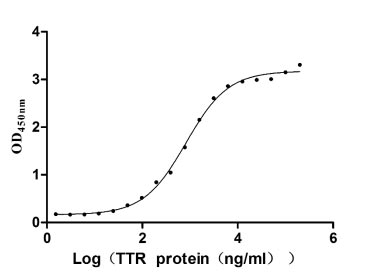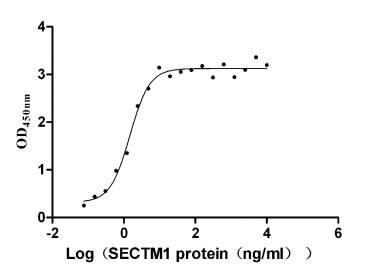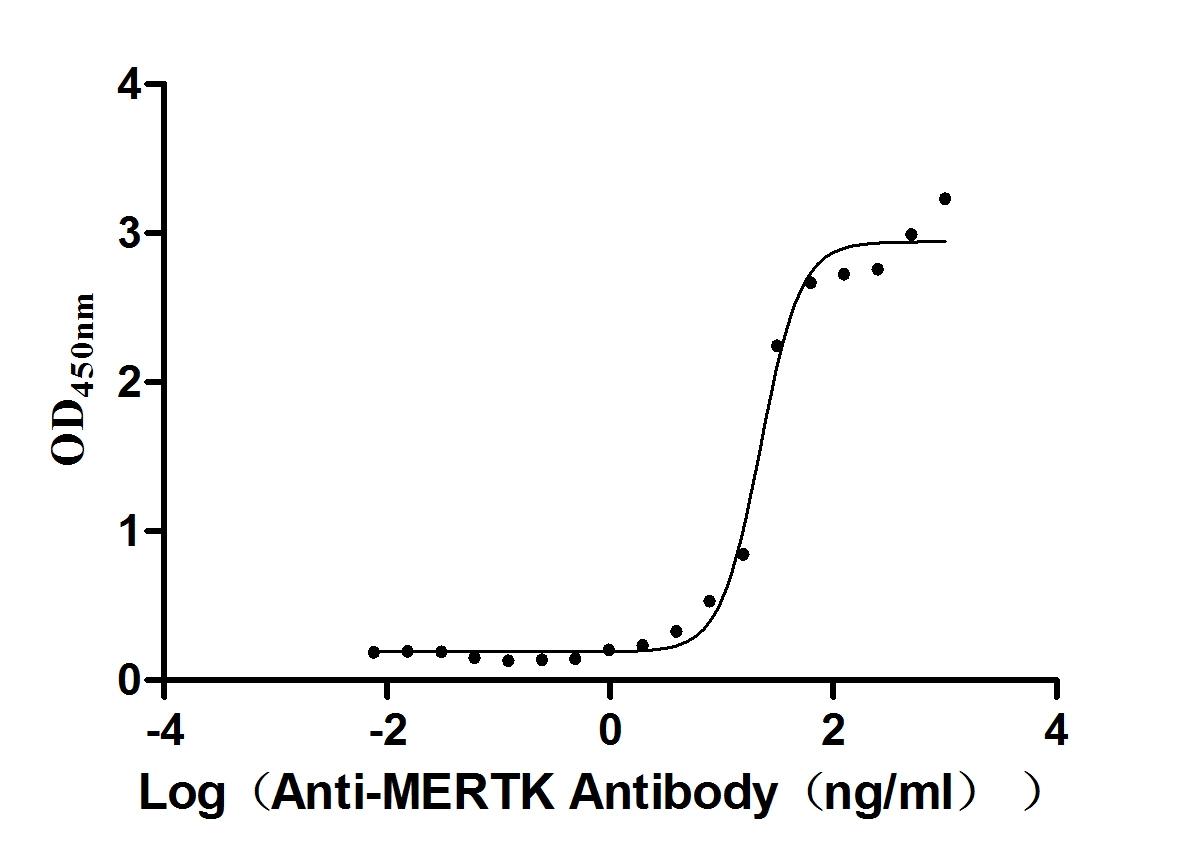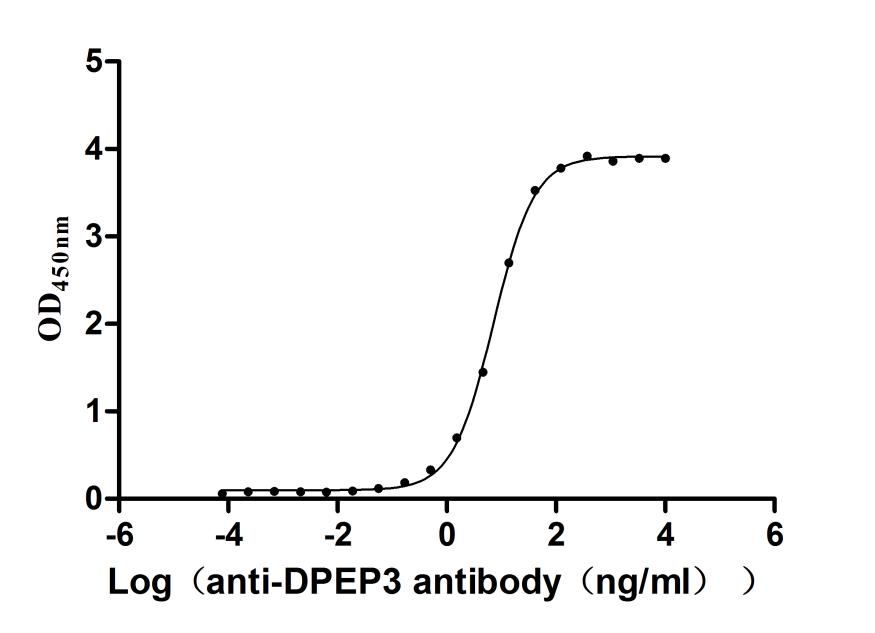Recombinant Versicolorin reductase (ver1)
-
货号:CSB-YP342664DPB
-
规格:
-
来源:Yeast
-
其他:
-
货号:CSB-EP342664DPB
-
规格:
-
来源:E.coli
-
其他:
-
货号:CSB-EP342664DPB-B
-
规格:
-
来源:E.coli
-
共轭:Avi-tag Biotinylated
E. coli biotin ligase (BirA) is highly specific in covalently attaching biotin to the 15 amino acid AviTag peptide. This recombinant protein was biotinylated in vivo by AviTag-BirA technology, which method is BriA catalyzes amide linkage between the biotin and the specific lysine of the AviTag.
-
其他:
-
货号:CSB-BP342664DPB
-
规格:
-
来源:Baculovirus
-
其他:
-
货号:CSB-MP342664DPB
-
规格:
-
来源:Mammalian cell
-
其他:
产品详情
-
纯度:>85% (SDS-PAGE)
-
基因名:aflM
-
Uniprot No.:
-
别名:aflM; ver-1; P875_00052984; Versicolorin reductase 1; VER-1; EC 1.1.-.-; Aflatoxin biosynthesis protein M
-
种属:Aspergillus parasiticus
-
蛋白长度:full length protein
-
表达区域:1-262
-
氨基酸序列MSDNHRLDGK VALVTGAGRG IGAAIAVALG ERGAKVVVNY AHSREAAEKV VEQIKANGTD AIAIQADVGD PEATAKLMAE TVRHFGYLDI VSSNAGIVSF GHLKDVTPEE FDRVFRVNTR GQFFVAREAY RHMREGGRII LTSSNTACVK GVPKHAVYSG SKGAIDTFVR CMAIDCGDKK ITVNAVAPGA IKTDMFLAVS REYIPNGETF TDEQVDECAA WLSPLNRVGL PVDVARVVSF LASDTAEWVS GKIIGVDGGA FR
-
蛋白标签:Tag type will be determined during the manufacturing process.
The tag type will be determined during production process. If you have specified tag type, please tell us and we will develop the specified tag preferentially. -
产品提供形式:Lyophilized powder
Note: We will preferentially ship the format that we have in stock, however, if you have any special requirement for the format, please remark your requirement when placing the order, we will prepare according to your demand. -
复溶:We recommend that this vial be briefly centrifuged prior to opening to bring the contents to the bottom. Please reconstitute protein in deionized sterile water to a concentration of 0.1-1.0 mg/mL.We recommend to add 5-50% of glycerol (final concentration) and aliquot for long-term storage at -20℃/-80℃. Our default final concentration of glycerol is 50%. Customers could use it as reference.
-
储存条件:Store at -20°C/-80°C upon receipt, aliquoting is necessary for mutiple use. Avoid repeated freeze-thaw cycles.
-
保质期:The shelf life is related to many factors, storage state, buffer ingredients, storage temperature and the stability of the protein itself.
Generally, the shelf life of liquid form is 6 months at -20°C/-80°C. The shelf life of lyophilized form is 12 months at -20°C/-80°C. -
货期:Delivery time may differ from different purchasing way or location, please kindly consult your local distributors for specific delivery time.Note: All of our proteins are default shipped with normal blue ice packs, if you request to ship with dry ice, please communicate with us in advance and extra fees will be charged.
-
注意事项:Repeated freezing and thawing is not recommended. Store working aliquots at 4°C for up to one week.
-
Datasheet :Please contact us to get it.
靶点详情
-
功能:Versicolorin reductase; part of the gene cluster that mediates the biosynthesis of aflatoxins, a group of polyketide-derived furanocoumarins, and part of the most toxic and carcinogenic compounds among the known mycotoxins. The four major aflatoxins produced by A.parasiticus are aflatoxin B1 (AFB1), aflatoxin B2 (AFB2), aflatoxin G1 (AFG1) and aflatoxin G2 (AFG2). The first step of the pathway is the conversion of acetate to norsolorinic acid (NOR) and requires the fatty acid synthase subunits aflA and aflB, as well as the PKS aflC. AflC combines a hexanoyl starter unit and 7 malonyl-CoA extender units to synthesize the precursor NOR. The hexanoyl starter unit is provided to the acyl-carrier protein (ACP) domain by the fungal fatty acid synthase aflA/aflB. The second step is the conversion of NOR to averantin (AVN) and requires the norsolorinic acid ketoreductase aflD, which catalyzes the dehydration of norsolorinic acid to form (1'S)-averantin. The norsolorinic acid reductases aflE and aflF may also play a role in the conversion of NOR to AVN. The cytochrome P450 monooxygenase aflG then catalyzes the hydroxylation of AVN to 5'hydroxyaverantin (HAVN). The next step is performed by the 5'-hydroxyaverantin dehydrogenase aflH that transforms HAVN to 5'-oxoaverantin (OAVN) which is further converted to averufin (AVF) by aflK that plays a dual role in the pathway, as a 5'-oxoaverantin cyclase that mediates conversion of 5'-oxoaverantin, as well as a versicolorin B synthase in a later step in the pathway. The averufin oxidase aflI catalyzes the conversion of AVF to versiconal hemiacetal acetate (VHA). VHA is then the substrate for the versiconal hemiacetal acetate esterase aflJ to yield versiconal (VAL). Versicolorin B synthase aflK then converts VAL to versicolorin B (VERB) by closing the bisfuran ring of aflatoxin which is required for DNA-binding, thus giving to aflatoxin its activity as a mutagen. Then, the activity of the versicolorin B desaturase aflL leads to versicolorin A (VERA). A branch point starts from VERB since it can also be converted to dihydrodemethylsterigmatocystin (DMDHST), probably also by aflL, VERA being a precursor for aflatoxins B1 and G1, and DMDHST for aflatoxins B2 and G2. Next, the versicolorin reductase aflM and the cytochrome P450 monooxygenase aflN are involved in conversion of VERA to demethylsterigmatocystin (DMST). AflX and aflY seem also involved in this step, through probable aflX-mediated epoxide ring-opening step following versicolorin A oxidation and aflY-mediated Baeyer-Villiger oxidation required for the formation of the xanthone ring. The methyltransferase aflO then leads to the modification of DMST to sterigmatocystin (ST), and of DMDHST to dihydrosterigmatocystin (DHST). Both ST and DHST are then substrates of the O-methyltransferase aflP to yield O-methylsterigmatocystin (OMST) and dihydro-O-methylsterigmatocystin (DHOMST), respectively. Finally OMST is converted to aflatoxins B1 and G1, and DHOMST to aflatoxins B2 and G2, via the action of several enzymes including O-methylsterigmatocystin oxidoreductase aflQ, the cytochrome P450 monooxygenase aflU, but also the NADH-dependent flavin oxidoreductase nadA which is specifically required for the synthesis of AFG1.
-
亚细胞定位:Cytoplasm, cytosol.
-
蛋白家族:Short-chain dehydrogenases/reductases (SDR) family
Most popular with customers
-
Recombinant Human Retinol-binding protein 4 (RBP4) (Active)
Express system: Mammalian cell
Species: Homo sapiens (Human)
-
Recombinant Human T-cell antigen CD7 (CD7), partial (Active)
Express system: Mammalian cell
Species: Homo sapiens (Human)
-
Recombinant Human T-cell surface protein tactile (CD96), partial (Active)
Express system: Mammalian cell
Species: Homo sapiens (Human)
-
Recombinant Mouse Tyrosine-protein kinase Mer (Mertk), partial (Active)
Express system: Mammalian cell
Species: Mus musculus (Mouse)
-
Recombinant Human Microtubule-associated protein tau (MAPT) (Active)
Express system: Mammalian cell
Species: Homo sapiens (Human)
-
Recombinant Human Dipeptidase 3(DPEP3), partial (Active)
Express system: Mammalian cell
Species: Homo sapiens (Human)
-
Recombinant Human Kidney-associated antigen 1(KAAG1) (Active)
Express system: E.coli
Species: Homo sapiens (Human)
-
Recombinant Macaca fascicularis Dipeptidase 3(DPEP3) (Active)
Express system: Mammalian cell
Species: Macaca fascicularis (Crab-eating macaque) (Cynomolgus monkey)




-AC1.jpg)

-AC1.jpg)













